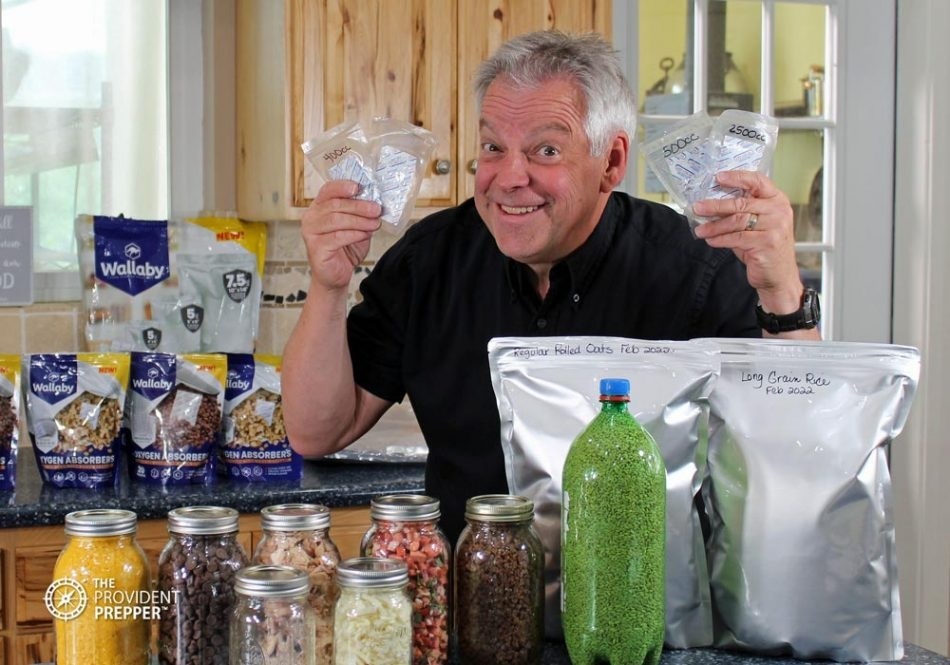In a world where food waste is a significant concern, finding effective methods to preserve food and extend its freshness is crucial. One such solution gaining popularity is the use of oxygen absorbers. In this article, we’ll explore how oxygen absorbers work, their role in reducing food waste, and how they can help you keep your food fresh for longer.
Understanding Oxygen Absorbers: Oxygen absorbers are small packets containing iron powder, salt, and clay. They work by absorbing oxygen from the surrounding environment, creating a nitrogen-rich atmosphere that inhibits the growth of aerobic bacteria and molds. This process helps to prevent oxidation, which is a primary cause of food spoilage.
How Oxygen Absorbers Reduce Food Waste:
Extended Shelf Life: One of the most significant ways oxygen absorbers combat food waste is by extending the shelf life of packaged goods. Oxygen is a primary culprit in the process of food spoilage. When exposed to oxygen, many foods undergo oxidation, leading to changes in color, texture, flavor, and nutritional content. By removing oxygen from the packaging environment, oxygen absorbers slow down these degradation processes, allowing foods to remain fresh and palatable for longer periods.
Preservation of Freshness: Oxygen absorbers play a vital role in preserving the freshness of various food items. For example, in the case of grains, nuts, and dried fruits, the absence of oxygen helps prevent rancidity, maintaining their crisp texture and natural flavors. Similarly, in dehydrated meats and jerky, oxygen absorbers inhibit the growth of harmful bacteria, preserving the meat’s quality and reducing the risk of foodborne illnesses.
Inhibition of Mold Growth: Mold growth is a common problem in food storage, particularly in moist environments with exposure to oxygen. Mold not only renders food unappetizing but can also produce toxins harmful to human health. Oxygen absorbers create conditions unsuitable for mold growth by reducing the available oxygen levels in the packaging. This inhibits the development of mold spores, significantly reducing the likelihood of spoilage and extending the shelf life of perishable items like grains, flour, and spices.
Protection Against Insects and Pests: In addition to mold and bacteria, insects and pests pose a threat to stored food items. Oxygen absorbers help create an environment that is inhospitable to these unwanted intruders. By removing oxygen, which many insects require for survival, oxygen absorbers act as a natural deterrent, safeguarding food supplies from infestations and contamination.
Minimization of Oxidative Reactions: Oxygen is involved in oxidative reactions that degrade the quality of fats and oils present in many food products. These reactions can lead to off-flavors, odors, and the formation of harmful compounds. Oxygen absorbers mitigate these oxidative processes, helping to maintain the freshness and nutritional integrity of fats and oils in products such as nuts, seeds, and cooking oils.
Benefits of Using Oxygen Absorbers:
Preservation of Flavor and Aroma: Oxygen absorbers help preserve the original flavor and aroma of food products by minimizing oxidation. When oxygen interacts with compounds in food, it can lead to flavor deterioration and the development of off-flavors and odors. By removing oxygen from the packaging environment, oxygen absorbers maintain the freshness and integrity of the food’s sensory characteristics, ensuring that it tastes and smells as intended.
Retainment of Nutritional Value: Oxygen absorbers play a crucial role in preserving the nutritional value of food items. Many vitamins, minerals, and other essential nutrients are sensitive to oxygen exposure and can degrade over time. By creating an oxygen-free atmosphere within the packaging, oxygen absorbers help minimize nutrient loss, allowing consumers to enjoy foods with higher nutritional content for longer periods.
Reduction of Foodborne Illness Risks: Oxygen absorbers contribute to food safety by inhibiting the growth of harmful microorganisms such as bacteria, mold, and yeast. These pathogens require oxygen to thrive and reproduce. By removing oxygen from the packaging environment, oxygen absorbers create conditions that are hostile to microbial growth, reducing the risk of foodborne illnesses and contamination.
Improved Product Quality: Oxygen absorbers help maintain the quality and consistency of food products over time. Whether it’s maintaining the crunchiness of snacks, the tenderness of dried fruits, or the freshness of baked goods, oxygen absorbers play a vital role in ensuring that consumers receive products that meet their expectations in terms of taste, texture, and appearance.
Extended Storage Duration: By slowing down the deterioration processes associated with oxygen exposure, oxygen absorbers extend the shelf life of packaged goods. This extension allows consumers and businesses alike to stockpile food items for longer periods without worrying about spoilage or quality degradation. As a result, oxygen absorbers contribute to reducing food waste and enhancing the efficiency of food supply chains.
Versatility in Packaging: Oxygen absorbers are compatible with a wide range of packaging materials, including plastic, metal, and glass containers, as well as flexible pouches and bags. This versatility makes them suitable for use with various food products, from grains and cereals to spices and pet food. Additionally, oxygen absorbers come in different sizes and formulations to accommodate the specific needs of different food items and packaging volumes.
Cost-Effectiveness: While the initial investment in oxygen absorbers may seem minimal, the long-term cost savings can be significant. By reducing food waste, extending shelf life, and minimizing the need for preservatives and other additives, oxygen absorbers help consumers and businesses save money on purchasing and disposing of spoiled food items.
How to Use Oxygen Absorbers Effectively:
Choose the Right Size: Select oxygen absorbers appropriate for the volume of the food packaging to ensure optimal absorption.
Proper Sealing: Ensure airtight sealing of food packaging to maximize the effectiveness of oxygen absorbers.
Store in a Cool, Dry Place: Maintain proper storage conditions to prevent moisture buildup, which can affect the performance of oxygen absorbers.
Incorporating oxygen absorbers into your food storage routine is a simple yet effective way to reduce food waste and extend the freshness of your pantry staples. By creating an oxygen-free environment, these small packets can significantly contribute to preserving the quality, nutritional value, and safety of your food supply. Join the movement towards sustainable food preservation and enjoy the benefits of longer-lasting, fresher food for you and your family.





